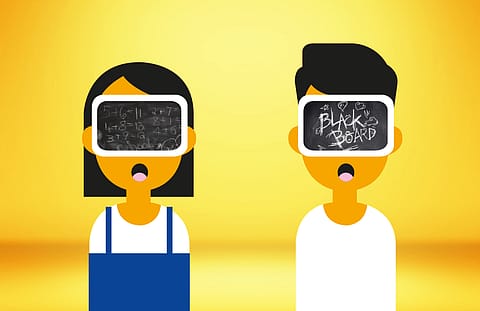How new learning methods will transform schools
As schools begin to reopen, the big tech revolution enabled by the rise of education technology will transform schools, and they would have to incorporate these as new ways to impart an education.

After almost a year of learning digitally from home, children may go back to school in the upcoming academic year. With vaccines being administered and educational institutions reopening their campuses, schools and teachers are gearing up with a back-to-school learning plan.
While children are excited about going back to school and having social interactions with classmates, their learning patterns and styles may have also drastically transformed in the last few months.
Educators need to consider if the traditional one-size-fits-all classroom learning approach will still be relevant. And more importantly, the education system on the whole may require a transformation to accommodate the learning needs of all students.
I believe a blended learning model is the answer! This will offer the best of the online and offline worlds and create new, tailored learning journeys for students. Here are a few learning trends which will be seen in classrooms of tomorrow.
Digitalisation of classrooms
During the lockdown, students and teachers moved online to ensure continuity in learning. As we look at schools reopening, we can expect teachers to continue using digital tools to shape their teaching even in a physical classroom.
Classroom-based learning may no longer be confined to lectures from teachers. Instead, digitally empowered educators can craft teaching methods to foster the love for learning in students. For instance, teachers can approach concepts by using explainer videos while providing students with gamified tools to practice what they had studied.
Active self-learners
While learning from home during the pandemic, students took the first step towards becoming self-learners. They took the drivers' seat and explored engaging lesson formats like videos and got used to content customised to suit their learning needs. I believe students will look forward to continuing this approach and will craft their learning path even when they go back to school.
To keep this student approach going, it is crucial to create an ecosystem that encourages self-initiated learning. As students learn on their own, teachers can encourage them further through team discussions, quizzes, or projects related to the concepts that students picked up in their self-learning paths.
Evolving student-teacher relationship
(INR CR)
The sudden closure of schools and shift to online education has not been an easy task. But, it’s ushered in a whole new way of how teaching and learning happens. Teachers have transitioned to being a mentor and a guide to students. Empowered by tech-enabled tools, teachers are going the extra mile to help students sail smoothly through their learning uninterrupted.
On the other hand, students have also taken the onus and initiative of crafting their own learning journeys based on their size, style, and pace. When compared to a couple of years ago, I believe learning today has become more personalized. Students are showing keen interest and are actively taking charge of their academics.
Evolving student-teacher relationship
The sudden closure of schools and shift to online education has not been an easy task. But, it’s ushered in a whole new way of how teaching and learning happens. Teachers have transitioned to being a mentor and a guide to students. Empowered by tech-enabled tools, teachers are going the extra mile to help students sail smoothly through their learning uninterrupted.
On the other hand, students have also taken the onus and initiative of crafting their own learning journeys based on their size, style, and pace. When compared to a couple of years ago, I believe learning today has become more personalised. Students are showing keen interest and are actively taking charge of their academics.
Views are personal. The author is Chief Strategy Officer, BYJU’S.